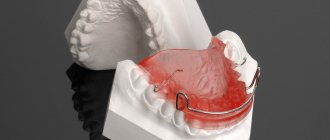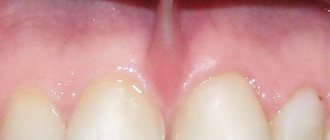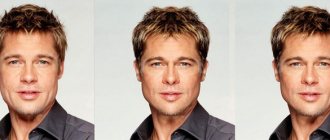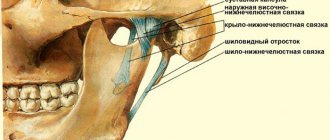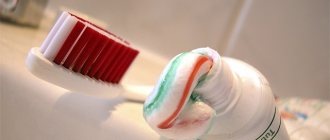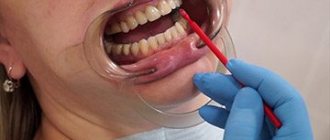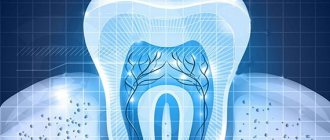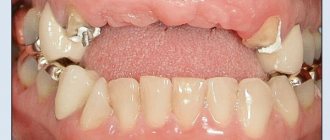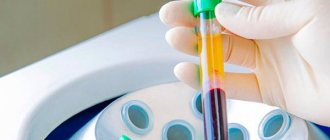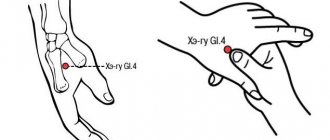Production
The device is created by specialists in a dental laboratory. It is removable and can be installed on two jaws at once. The design includes the following elements:
- frame;
- cheek shields;
- lip pelota.
The frame is made of durable metal wire, which is formed into arcs. There are several of the latter in the product:
- palatal;
- lingual;
- vestibular;
- lingual (added in some cases).
Pilots and shields are special flaps to limit unnecessary force. They can be either metal or plastic. The width is determined by the degree of pathology, but does not exceed two and a half millimeters. All elements are polished to avoid injury to the periodontium and dentin.
The product is manufactured individually for each patient. The basis is taken from impressions and impressions of teeth made in advance.
Manufacturing stages
Before production begins, the doctor determines the type of malocclusion and the advisability of using the device in a specific case of pathology.
To do this, not only an examination is carried out, but also an x-ray examination and, if necessary, other methods of study. If the patient’s age and existing changes provide for the possibility of correction using the Persin device, the manufacturing process begins.
An important point is the collection of the patient’s allergy history. If a child is allergic to any type of plastic or metal, it is advisable to inform about this before starting treatment so that the doctor can choose a hypoallergenic analogue.
At the first stage of manufacturing, it is necessary to determine the constructive bite of a particular patient using a wax template. To do this, an impression is taken from the patient’s jaws, which becomes the basis for further development of the design.
Based on the wax impression, a plaster model of the patient’s jaws is made, on which a base (supporting part) and a spring, curved in accordance with the location of the frontal dental units, are subsequently built.
This is interesting: Smoking with braces installed - is it possible to smoke?
After production, fitting and fitting is carried out directly on the patient. If necessary, correction is made, and then installation.
At the same time, the patient is explained exactly how to independently install the device subsequently, how long it takes to wear it, and how to care for it.
Clinical stage
Making impressions of the upper and lower jaws and subsequent production of test models.
The bite is assessed to ensure correct fabrication of the structure. It is carried out in the following sections:
- transversely symmetrical - the patient opens his mouth until the teeth located on the sides occupy a neutral position;
- vertical - the distance between the lateral teeth is 0.3-0.5 cm;
- horizontal - it is important that the straight line crossing the border of the front teeth does not bend.
Laboratory stage
Creation of a wax base with functional elements for the upper jaw. A special coating is applied to the resulting structure, a wax strip is used to form a crimp for the palate and lateral teeth, and excess wax is removed.
The occlusal ridge is created from a wax multilayer plate. The roller is fixed to the base with liquid wax.
Clinical stage
Next, the manufactured structure is adjusted to the characteristics of the oral cavity. Excess is removed. The hardened wax is gradually replaced with soft wax, which allows you to recreate the exact shape of the inside of the dentition.
A base tailored to the patient’s characteristics is used to make a plaster mold. Wire elements are built into the resulting structure, after which excess plaster is removed.
Next, the resulting device is installed in a cuvette. For double-jaw devices, the cuvette should be higher than usual.
Then a plastic mass is formed, from which a base is created when heated to 20-23 degrees.
Having aligned the sides of the cuvette, the substance is poured in and subjected to pressure testing for a short time, then the metal elements are installed.
The resulting structure must be heat treated in a boiling liquid for an hour. After cooling, the final processing and polishing of the device occurs.
The final clinical stage consists of fitting and fixing the manufactured structure in the patient’s oral cavity.
Kinds
There are several types of Frenkel function regulator, each of which has its own characteristics. The doctor selects the appropriate option depending on the nature of the existing pathology and its severity.
FR-1
There are three types:
- FR-la;
- FR-lb;
- FR-lc.
The basis of the design is the lingual and palatal arches, which are fastened with pelotas. The main indication is a distal bite with incisors inclined forward. During the correction process, the dentition expands to create free space. As a result, the front teeth are given the opportunity to grow properly.
FR-2
This device is used to correct distal occlusion, combined with an inclination of the upper incisors towards the palate.
Peculiarities:
- special shape of loops;
- double pilots.
Fr-3
The device differs significantly from other types in its design. There are special side pads. Lip patches are fixed only in the upper lip area. The third type of adjuster is prescribed to correct mesial occlusion caused by lower prognathism or excessive development of the lower jaw.
Fr-4
The vestibular arch is installed on the upper dentition, and the pelota on the lower lip. Indication for use: open bite. The device eliminates factors inhibiting the growth of the lower jaw. Metal overlays on the sides of the dentition allow you to separate the bite and achieve dentoalveolar shortening.
Indications for use
The principle of operation of the design is to influence muscle groups and alveolar ridges. This normalizes the placement of teeth and eliminates excessive pressure from the lips and cheeks on the areas that cause the most problems.
The device has a wide range of effects, ranging from stimulation of the apical base to strengthening of muscle groups. The uniqueness of the device lies in the fact that it has a comprehensive effect and can be configured to solve a specific problem. In general, the main principle of the design is to influence the muscles and maintain their tone.
Wearing rules and care
Before starting therapy, the orthodontist gives detailed recommendations on the use and care of the regulator. The device should only be worn while sleeping because you should not chew or talk while wearing it. To enhance the effect, you can wear it for an additional three hours during the day. It does not cause discomfort to small patients (unlike many other orthodontic structures). Another advantage is the rapid adaptation period.
During the treatment process, you will need to change the product 2-3 times, because the child’s jaws are actively growing, and the effectiveness of the correction may decrease.
The device must be cleaned regularly to avoid the accumulation of bacteria on its surface. If you neglect proper care, this is fraught with the development of caries.
Efficacy and duration of treatment
The optimal age for treatment with the Persin device is 7-12 years, when the child’s dental system is mobile enough to undergo changes under the influence of physiological force.
The duration of treatment is determined by the depth of the defect and the duration of daily wear. It is recommended to wear the device day and night, while performing articulatory movements to activate the spring.
The use of this orthodontic product is most effective for the age group from 8 to 12 years. The use of the device by older patients also gives good results.
The product is intended to be worn 12-14 hours a day. The first positive results in changing the bite were observed after 15 - 20 days.
The duration of the active treatment period depends on the severity of the occlusion defect, the patient's consciousness and his age. On average, it lasts from several months to a year.
A retention period after treatment is mandatory and consists of using a plate with an inclined plane for the lower jaw.
If you wear the device regularly, a malocclusion can be corrected in 6-8 months.
The video provides additional information on the topic of the article.
Sources
- https://orto-info.ru/sistemyi-vyiravnivaniya-zubov/individualno-izgotovlennyie-apparatyi/korrektsii-distalnoy-okklyuzii-persina.html
- https://zubovv.ru/ortodontiya/plastinyi/apparata-persina.html
- https://best-stom.ru/articles/apparat-persina/
- https://www.vash-dentist.ru/ortodontiya/plastinyi/ispolzovanie-apparata-persina.html
[collapse]
Purpose of the device
The Persin apparatus is used to eliminate pathology when combining the upper and lower jaws in a distal type bite.
This deviation occurs quite often in dentistry. It manifests itself in an imbalance in the development of bone tissue in both jaws.
As a rule, the lower jaw is inferior in development to the upper. Because of this, malocclusion occurs and problems with the dentition arise. Externally, such a pathology is noticeable by the upper teeth being pushed forward.
In addition to external unattractiveness, deviations in the structure of the dentition create other problems:
- changes in the functioning of the jaw mechanism leads to an increase in defects in the teeth located behind. As a result, they deteriorate and break down faster;
- the risk of complete tooth loss due to gum problems increases;
- diseases of the jaw joints develop;
- dysfunction of the respiratory and digestive organs appears;
- Dental treatment using dentures is difficult.
Reviews
Problems with the dentition and bite development are very delicate. Wearing various devices, especially at school age, can cause psychological trauma due to ridicule from classmates.
Therefore, it is very important to carry out effective therapy in a short time, so that the discomfort felt takes as little time as possible.
If you have already overcome similar pathologies or use functional devices for correction, please leave your comments after the article, they will be very useful.
If you find an error, please select a piece of text and press Ctrl+Enter.
Tags: teeth straightening plates
Did you like the article? stay tuned
Previous article
What dental problems can be solved using Bio Oss bone material?
Next article
Intrapulpal anesthesia is an option for high-quality and effective pain relief
